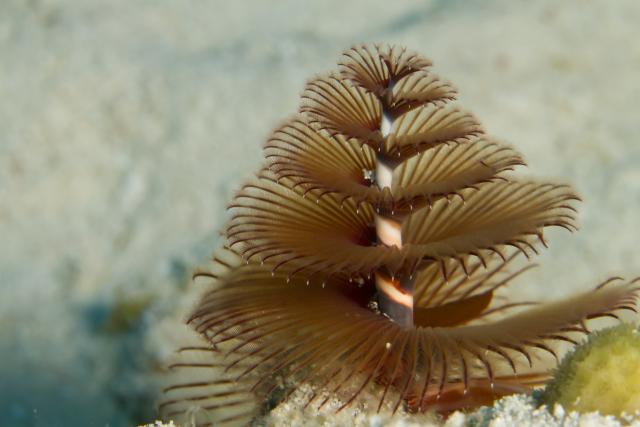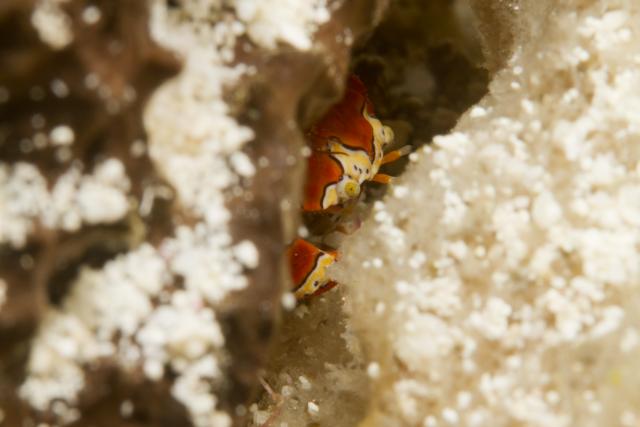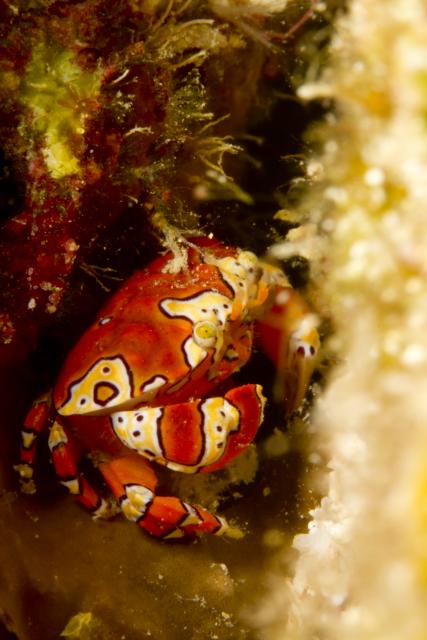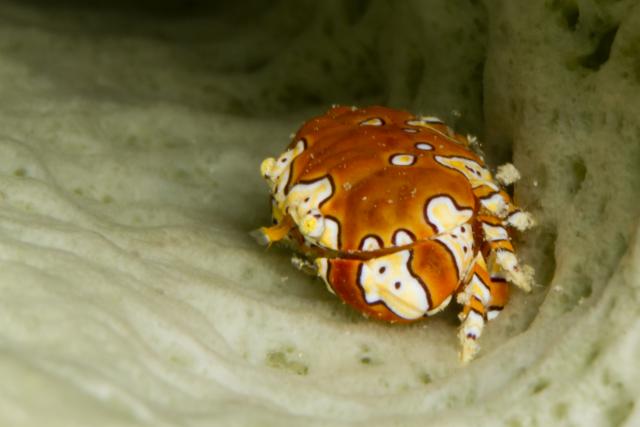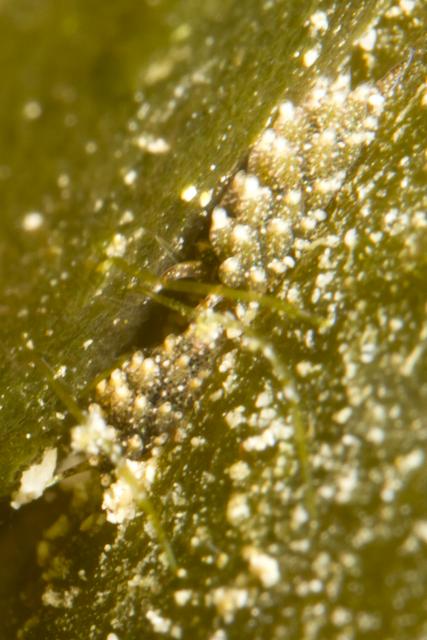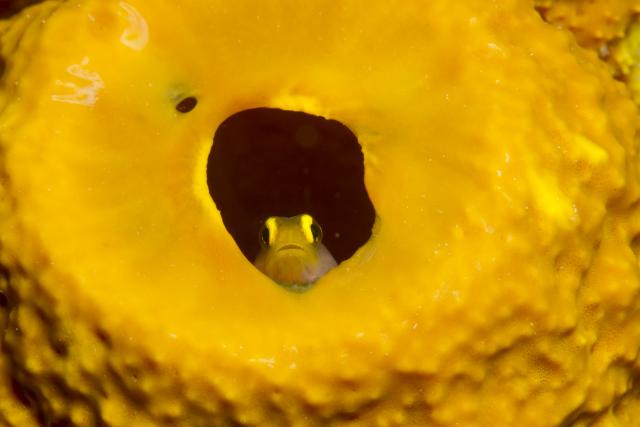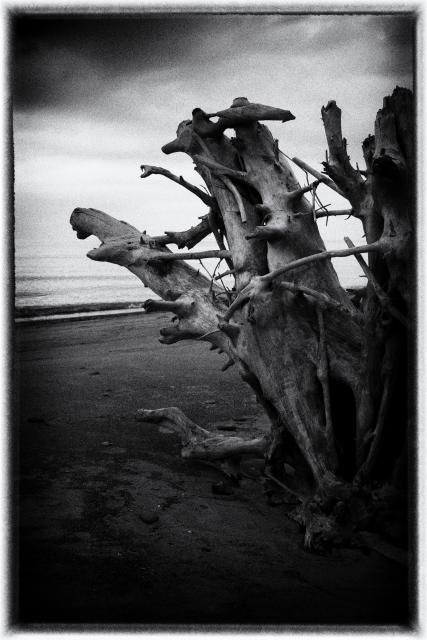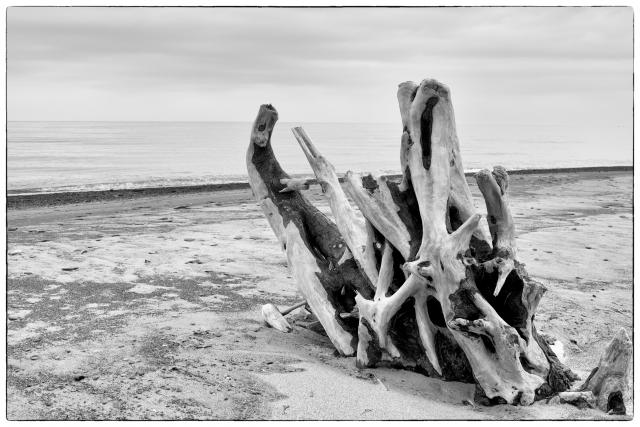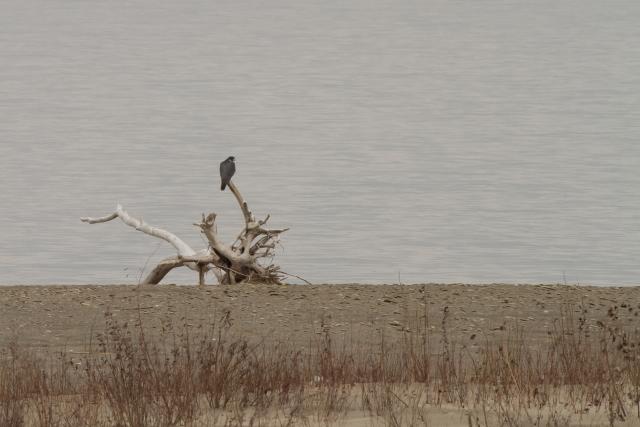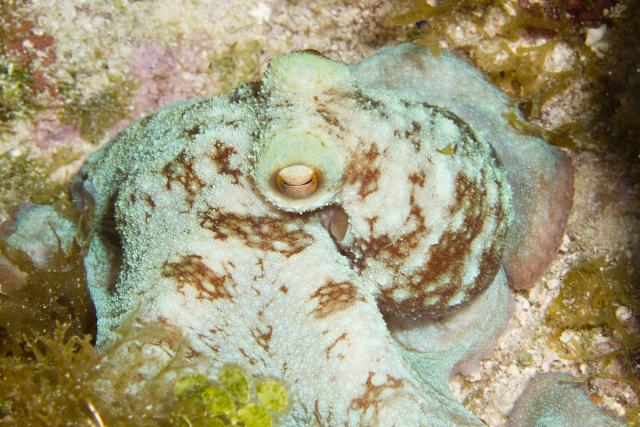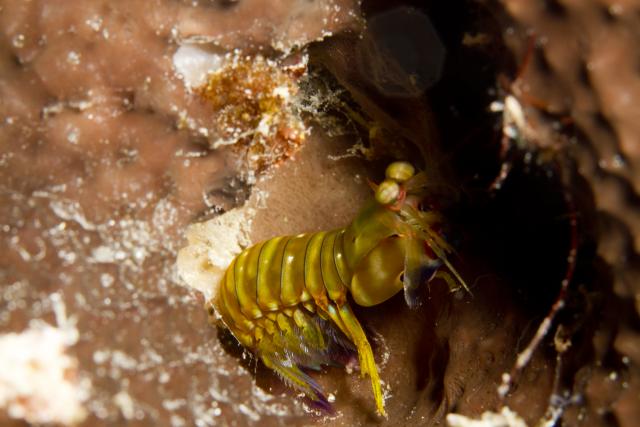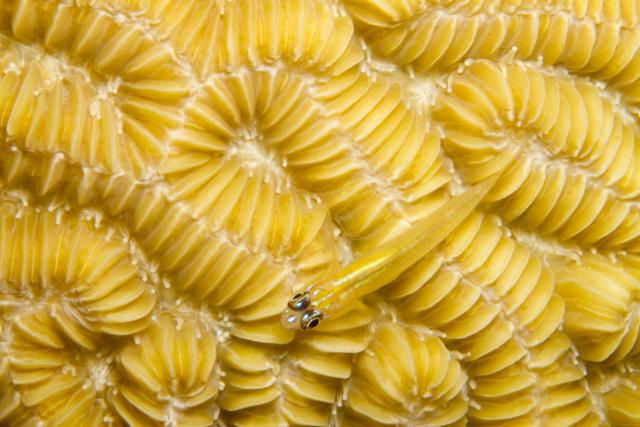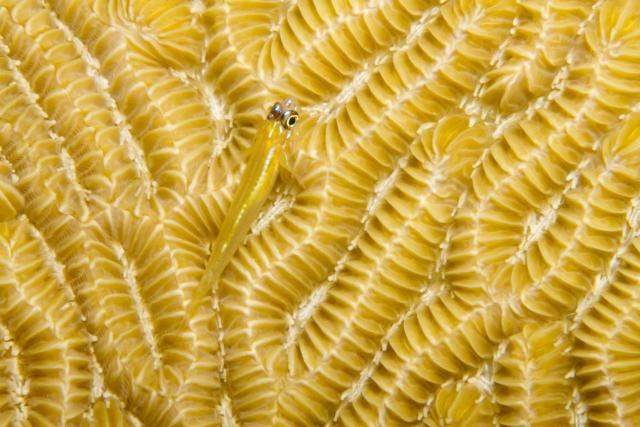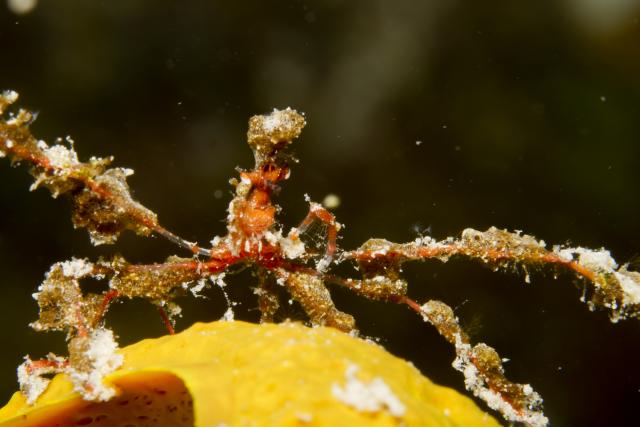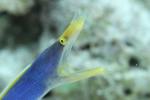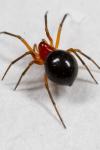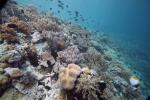Merry Christmas 2015
ktuli — Thu, 12/24/2015 - 08:24
Here's wishing you a Merry Christmas with an assortment of Christmas Tree Worms (Spirobranchus giganteus) from several different dive trips...
Technical Data: Canon EOS 7D, Canon EF 100mm f/2.8L Macro IS USM, 1/200th sec at f/16. Image Stabilization on. ISO 400. Ikelite Housing and Port and Ikelite 161 Strobe in TTL Mode. Raw conversion and cropped in Photoshop CS5.
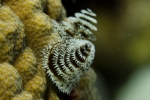 |
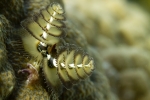 |
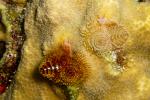 |
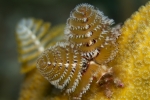 |
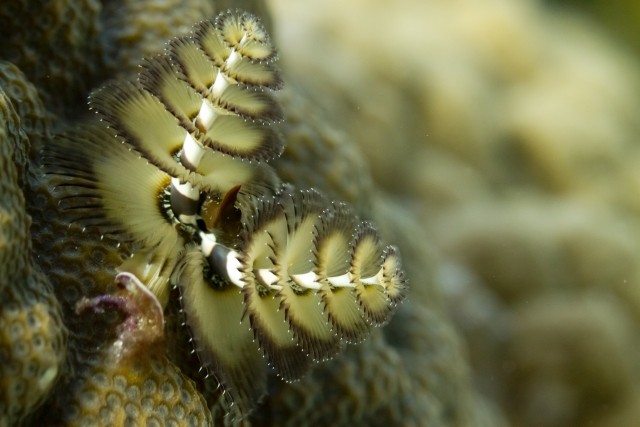 |
|||
Have a safe and happy holiday!
- Bill
Turks and Caicos Explorer 2015: Guady Clown Crab
ktuli — Tue, 12/22/2015 - 19:29
So back in 2012 when we were first on the Turks and Caicos Explorer II, we were lucky enough to find a Gaudy Clown Crab (Platypodiella spectabilis). In fact, on that trip we did another dive at the same site to try and find it again for the boat captain.
Then last year on our trip to the Bahamas, we saw one but with my wide-angle lens, I wasn't able to get a good photo of it.
Fast forward some more to this year, and on our second day of diving, Anya spotted yet another one. Unfortunately, that one was tucked in a hole and I barely could get a photo of it. I took one (and actually kept it) just to show how difficult they were to photograph. I was going to share it here, but figured why waste the space.
On our very last dive, Anya found one that was actually sitting out on top of a sponge. Unfortunately, as I approached with the camera, it ran for cover....
I thought to myself that I blew it and I ruined an opportunity for a great photo subject... I took what photos I could, but really it was a lost cause.
Reluctantly, we swam off in search of other subjects.
On our return the boat, Anya spotted the same sponge, and noticed that the crab was in a better position again.
Thankfully, the little guy was probably the boldest Gaudy Clown Crab and decided to ignore me and proceed with his meal, moving along the sponge (though still somewhat concealed) eating. But he wasn't running for cover like they normally do...
Then... Anya found a second one on a different sponge!
This one was also pretty bold and at least didn't run away. I took a couple shots, but then found yet another cool subject inside the same sponge (and I'll share that tomorrow).
- Bill
Turks and Caicos Explorer 2015: Nudibranchs
ktuli — Mon, 12/21/2015 - 18:11
What would a dive trip be without at least a couple nudibranch shots. Sadly, we didn't get a ton of nudis this trip, but we did get some.
This first of the week came in the form of two insanely tiny nudibranchs that were hidden at the base of what was either a small two-leafed plant or algae. I honestly don't even know how our dive guide, Andi, found them, but he made a point to show them to me since he knew I wanted to find some nudibranchs. Because of their location and the fact that they were hiding between those leaves, the photographs were very difficult to get, but I managed to get a couple that I could at least identify that they were indeed nudibranchs... (honestly, in the water, it was pretty hard to even tell what I was looking at!). I believe these are Ercolania coerulea, but because they are so tiny (probably about 1/4"), my ID may be off.
Technical Data: Canon EOS 7D, Canon EF 100mm f/2.8L Macro IS USM, 1/200th sec at f/16. Image Stabilization on. ISO 400. Ikelite Housing and Port and Ikelite 161 Strobe in TTL Mode. Raw conversion in Photoshop CS5.
The next species of nudibranchs I believe are Berolina Aglaja (Chelidonura berolina). We've seen these little guys before and they are indeed tiny - also in the 1/4" range. They are always found out on the open sand, and from any kind of distance, they look just like black spots on the sand. It isn't until you get close that you notice some shape to them and that they are moving... The last one here, I'm not 100% is the same species, but I'm not sure what else it might be, so...
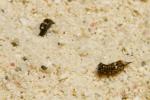 |
 |
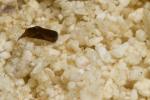 |
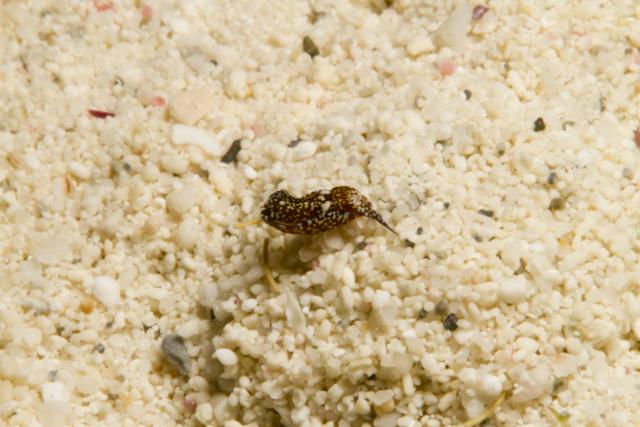 |
||
Then we saw a Trapania dalva - another small (about 1/2" this time) nudibranch we've seen on multiple trips in the past.
Technical Data: Canon EOS 7D, Canon EF 100mm f/2.8L Macro IS USM, 1/200th sec at f/16. Image Stabilization on. ISO 400. Ikelite Housing and Port and Ikelite 161 Strobe in TTL Mode. Raw conversion and cropped in Photoshop CS5.
Finally, on our last night dive, Anya found a sponge with about 8 or 10 (I should have made a point to count exactly how many there were) Longhorn Nudibranchs (Austraeolis catina). These guys are a bit bigger at about 1" in length. I spent about five minutes taking photos of these guys (though I should have taken a bit longer because some of the shots could have been better).
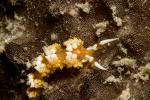 |
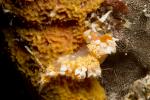 |
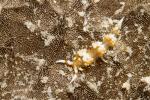 |
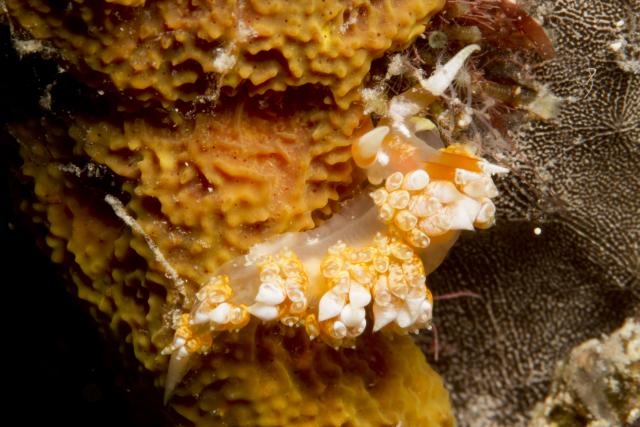 |
||
I'm still really looking forward to another Indo-Pacific dive trip so that we can see many more species of nudibranchs, and during the day so I can hopefully get some true gems of photos to come back with. Till now, any nudibranchs we get to see in Caribbean waters are always a treat because of their general rarity.
- Bill
Turks and Caicos Explorer 2015: Goby in Tube Sponge
ktuli — Sun, 12/20/2015 - 19:35
A small goby (Elacatinus spp.) in a tube sponge (Agelas tubulata)...
Technical Data: Canon EOS 7D, Canon EF 100mm f/2.8L Macro IS USM, 1/200th sec at f/16. Image Stabilization on. ISO 400. Ikelite Housing and Port and Ikelite 161 Strobe in TTL Mode. Raw conversion in Photoshop CS5.
- Bill
Presque Isle Driftwood (part 2)
ktuli — Fri, 12/18/2015 - 14:49
While that last shot really made me look at multiple ways to convert the image to black and white, these two were much easier as these conversions really stuck out for me and worked perfectly for what I wanted to portray with the conversion...
Technical Data: Canon EOS 7D, Canon EF-S 18-55mm f/3.5-5.6 IS STM at 27mm, 1/120th second at f/8. ISO 800. RAW processing in Adobe Camera Raw, B&W conversion in Adobe Photoshop CS5 with Nik Silver Efex Pro using Preset 030 - Film Noir 1.
Mouseover the images to see the original color version.
Technical Data: Canon EOS 7D, Canon EF-S 18-55mm f/3.5-5.6 IS STM at 27mm, 1/120th second at f/8. ISO 800. RAW processing and cropped in Adobe Camera Raw, B&W conversion in Adobe Photoshop CS5 with Nik Silver Efex Pro using Preset 020 - Fine Art (high key, framed).
And as a bonus, here's a heavily cropped shot of a Peregrine Falcon sitting atop another piece of driftwood. This particular piece was probably 200 yards away, so the sharpness produced by my Canon 100-400 Mark II lens was definitely very surprising. I really expected any of the bird photos at this distance to be completely useless, but surprisingly I was able to salvage at least a couple for slightly more than identification photos.
Technical Data: Canon EOS 7D, Canon EF 100-400mm f/4.5-5.6L IS II USM at 400mm, 1/200 sec at f/11. ISO 800. IS Mode 1. RAW processing and cropped in Adobe Camera Raw.
We'll get back to the underwater shots here soon - I still have some gems to share from that trip (and hopefully at least one more video if I can get the motivation to put another one together).
Thanks for stopping by!
- Bill
Poll: Presque Isle Driftwood (part 1)
ktuli — Thu, 12/17/2015 - 17:49
And now for something completely different... </Monty Python>
Well, to be entirely accurate, we'll look at six rather similar things that are still pretty different in their own respect. We'll take a little break from the underwater photography and look at some photos taken just this past weekend in Presque Isle State Park. Anya and I went to the park to do some birding, and while we didn't see much in the way of birds, we did see some cool driftwood on the beach at Gull Point. As soon as I saw it, I knew I wanted to do some black and white photography of it.
What I didn't realize was that picking which B&W conversion I liked the best would be a very big challenge.
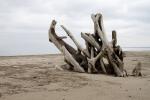 Original Color |
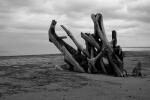 Preset 001 Underexposed (EV -1) |
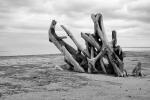 Preset 005 High Structure (harsh) |
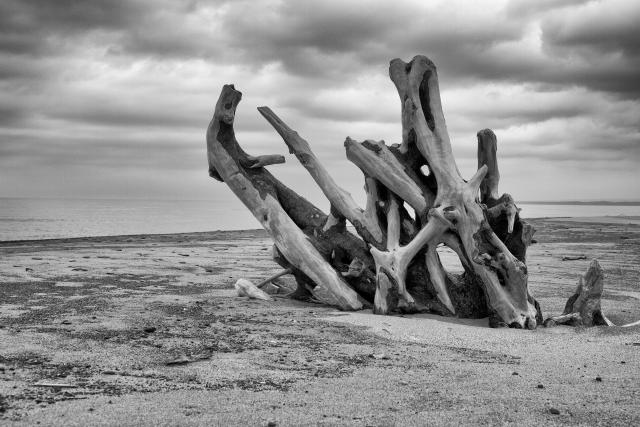 |
||
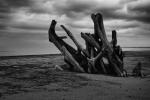 Preset 010 Low Key 2 |
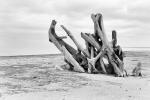 Preset 020 Fine Art (high key) |
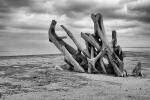 Preset 024 Full Contrast and Structure |
Technical Data: Canon EOS 7D, Canon EF-S 18-55mm f/3.5-5.6 IS STM at 26mm, 1/80th second at f/8. ISO 800. RAW processing in Adobe Camera Raw, B&W conversion in Adobe Photoshop CS5 with Nik Silver Efex Pro.
As you can see from the original color version, it was a heavily overcast day, and even the horizon between the sky and the surface of the lake blended into each other and vanished. I wanted to either eliminate the sky or somehow draw some detail out of it. I think each of these conversions were at least partially successful in that goal, but I was amazed at how each conversion produces almost a completely new feel to the scene.
Mouseover each thumbnail to display the larger version, then cast your vote below for your favorite.
- Bill
Turks and Caicos Explorer 2015: Octopus
ktuli — Wed, 12/16/2015 - 14:40
Sorry - I've been neglecting posting photos recently, and even this is just a quick one to tide you over for now (I need to get working on a new video to be honest)...
Technical Data: Canon EOS 7D, Canon EF 100mm f/2.8L Macro IS USM, 1/200th sec at f/16. Image Stabilization on. ISO 400. Ikelite Housing and Port and Ikelite 161 Strobe in TTL Mode. Raw conversion in Photoshop CS5.
- Bill
Turks and Caicos Explorer 2015: Dark Mantis Shrimp
ktuli — Thu, 12/10/2015 - 17:33
So when we went to Wakatobi, mantis shrimp were definitely on my list of things to look for. When we're in the Caribbean, they're not something I expect to see, so when we managed to find three separate ones on this trip, it was pretty impressive. I don't know if this is just luck, or if Anya is getting better at spotting them (she located all three).
The first one I didn't even get to take any photos of. The last one I only managed to get a shot of it once it had retreated back to its burrow and would only stick its head out (I might have been able to wait it out a bit longer to see if it would come out, but there was a ton of other stuff to photograph on that dive). But this one... this was the cream of the crop! Anya spotted this one in the bottom of a small barrel sponge.
Technical Data: Canon EOS 7D, Canon EF 100mm f/2.8L Macro IS USM, 1/200th sec at f/16. Image Stabilization on. ISO 400. Ikelite Housing and Port and Ikelite 161 Strobe in TTL Mode. Raw conversion in Photoshop CS5.
It is a Dark Mantis (Neogonodactylus curacaoensis) and they grow to about 2 inches in length, which is about how big this guy was. They're pretty quick and I had to move and think just as quick to try and get the photos I did. I didn't want my camera to go into an auto-focus hunt mode, so I was trying to make minor adjustments with the manual adjustment knob and use the AF button as little as possible, which explains both why there aren't quite as sharp as they could be and that some of them are a bit too close - I wish I had backed up a little and gotten the whole mantis in the shot.
But all things considered (especially that it was only out of its burrow for a minute), I am pretty happy with the results.
 |
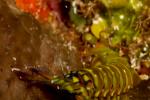 |
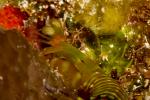 |
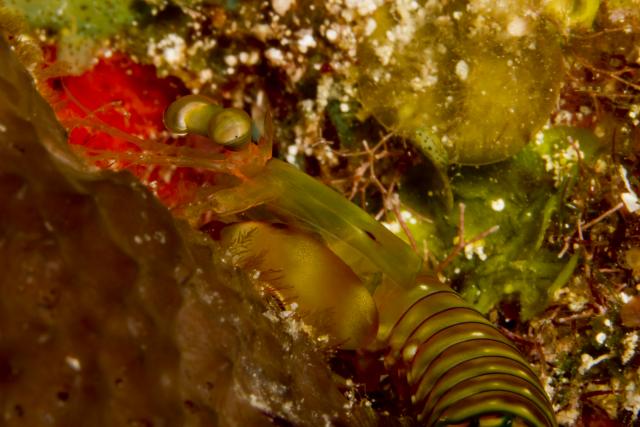 |
||
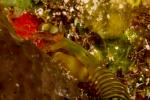 |
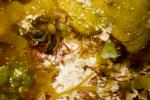 |
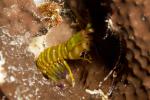 |
This really was one of the highlights of the trip.
- Bill
Turks and Caicos Explorer 2015: Patterns of the Reef (part 7)
ktuli — Wed, 12/09/2015 - 14:40
Ok - another entry in my Patterns of the Reef semi-abstract series. This one brings yet another Peppermint Goby (Coryphopterus lipernes), but this time sitting on some sort of brain coral (I couldn't get a species ID).
Because I couldn't pick which one I liked better, you get two shots this time...
Technical Data: Canon EOS 7D, Canon EF 100mm f/2.8L Macro IS USM, 1/200th sec at f/32. Image Stabilization on. ISO 400. Ikelite Housing and Port and Ikelite 161 Strobe in TTL Mode. Raw conversion in Photoshop CS5.
Technical Data: Canon EOS 7D, Canon EF 100mm f/2.8L Macro IS USM, 1/200th sec at f/32. Image Stabilization on. ISO 400. Ikelite Housing and Port and Ikelite 161 Strobe in TTL Mode. Raw conversion in Photoshop CS5.
- Bill
Turks and Caicos Explorer 2015: Everybody Was Kung Fu Fighting!
ktuli — Mon, 12/07/2015 - 18:56
Ok - sorry, but every time I look at this photo, that's what pops into my head...
Technical Data: Canon EOS 7D, Canon EF 100mm f/2.8L Macro IS USM, 1/200th sec at f/20. Image Stabilization on. ISO 400. Ikelite Housing and Port and Ikelite 161 Strobe in TTL Mode. Raw conversion in Photoshop CS5.
This strange looking kung fu fighter is a Neck Crab (Podochela spp.) - a type of decorator crab, these odd little guys like to attach things like hydroids (example below), pieces of sponge, and whatever else they can find to their exoskeleton. There are theories that this is for camouflage, and some that the hydroids and any other stinging celled decorations are used to help with food collection. The second theory is supported by the fact that these guys often wave those long front legs out above them like this individual is here. Either way, it makes them definitely a cryptic and weird critter on the reef.
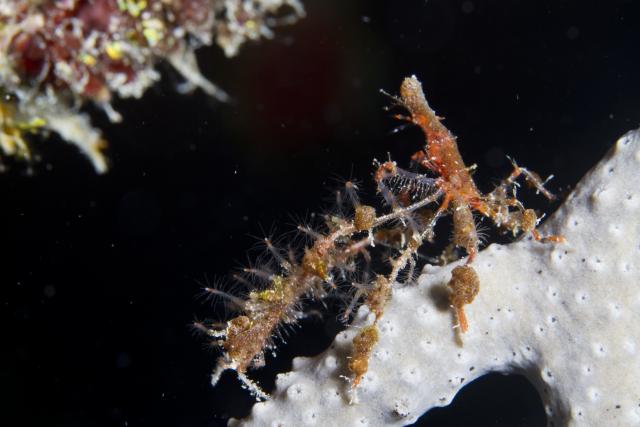 |
||
 |
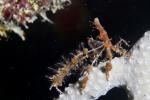 |
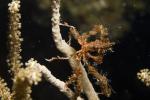 |
See what I mean - it is a challenge to even figure out what parts are what, but if you look closely, you will see a pair of eyes that stick out a bit to the sides of the head that sticks up like a post in the middle of the crab (kind of like an arrow crab). I find them fascinating!
- Bill

